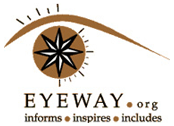As visually-impaired students begin learning to read by way of Braille, many also are learning how to navigate their world with help from a white cane. A Lexington One teacher helped create a brand-new resource to take away some of the apprehension by introducing the cane in a fun way.
Kara Miller, instructor of students with visual impairments in the district since 2012, worked with Laura Palko Chartier of the South Carolina School for the Deaf and Blind to handcraft a one-of-a-kind children’s book. The duo, who previously worked together at the SCSDB, realized how few kid-friendly resources there are relating to the white cane, a standard mobility device for the blind. They wanted to incorporate reading into the creation of a kid-friendly resource and elected to tell the story of a visually-impaired boy through a tactile book with different textures in addition to Braille.
“The original idea behind the book was to tie in literacy to a necessary hands-on skill,” Miller said. “It’s designed as an introductory tool for the student who is visually impaired. By using high contrast colors, large print, Braille, and tactile diagrams, a student of varying visual ability would have access.”
In “Ready, Set, Go,” kids read the story of Zach, a child who has just gotten his white cane. Zach tells readers what to expect when they receive their own cane and how it can help them get around safely.
Miller said she long has wanted to create a textbook on visual impairment and education, but Chartier, an orientation and mobility instructor, suggested they combine their backgrounds in literacy and mobility to benefit the students they work with each week. They started with a base idea from Chartier and developed the book from there.
“The process began when we had the desire to do something more for our field. … We were talking about our young students and the challenges they face when being introduced to the white cane,” Miller said. “We think that books make a level playing ground. What better way to introduce a child to a skill and make them comfortable than (with) a book?”
Miller and Chartier began cementing their storyline last January and had a finished product by the time summer rolled around.
The book isn’t made of typical paper and ink as it’s geared to a unique audience. Miller and Chartier agreed choosing just the right materials was one of their challenges.
“When teaching tactile skills, it is important that only a few materials are used and that they are very distinguishable,” Miller said.
Zach and his surroundings are made of items like buttons, cork, carpet remnants and felt with a Q-tip for his cane. The book is designed to be interactive, and one page allows the reader to remove the cane and try it out on different material samples. It also includes print and Braille lettering.
Miller said her students have quickly taken to Zach and “Ready, Set, Go”.
“It’s one of my little ones’ favorite things,” she said. “They are not so hesitant to use their cane now.”
Students with no visual impairments also have gotten enjoyment from the book. Miller said it’s a great way to introduce them to the world of someone who is blind.
“By using literacy … a door is opened for everybody to learn something new. Most students in public schools learn about Helen Keller in the second grade. There is a great interest in her and her abilities, yet there is little literacy about the tools used by individuals who are blind,” she said. “All children love to touch, feel and interact with not only the words on the page, but also the pictures.”
After months of Miller and Chartier coordinating their schedules — which they said was also a challenge since Chartier is based in Spartanburg — the two found an opportunity to get the book some notice. Miller learned of the Typhlo and Tactus Book Contest through connections with the American Printing House for the Blind. They entered their book into the national level first.
“I wanted to try to get our book published but then Kara found the Typhlo and Tactus contest. The contest was a great way to see if we had what it takes,” Chartier recalled.
Tactile books with unusual materials aren’t easily mass produced, but the panel of judges thought “Ready, Set, Go” has great potential and selected it as one of five national winners in September. The book then was submitted at the international level as one of 61 entries. The book didn’t place in the top three (the only prizes announced), but its journey isn’t over yet.
“Laura and I are discussing ways to publish it and we have ideas for actually personalizing it,” Miller said.
“We make a great team,” Chartier said. “Our future plans consist of creating other books as well as presenting about them. I can’t wait to create another book with her.”
SOURCE: COLA DAILY

Facebook comments